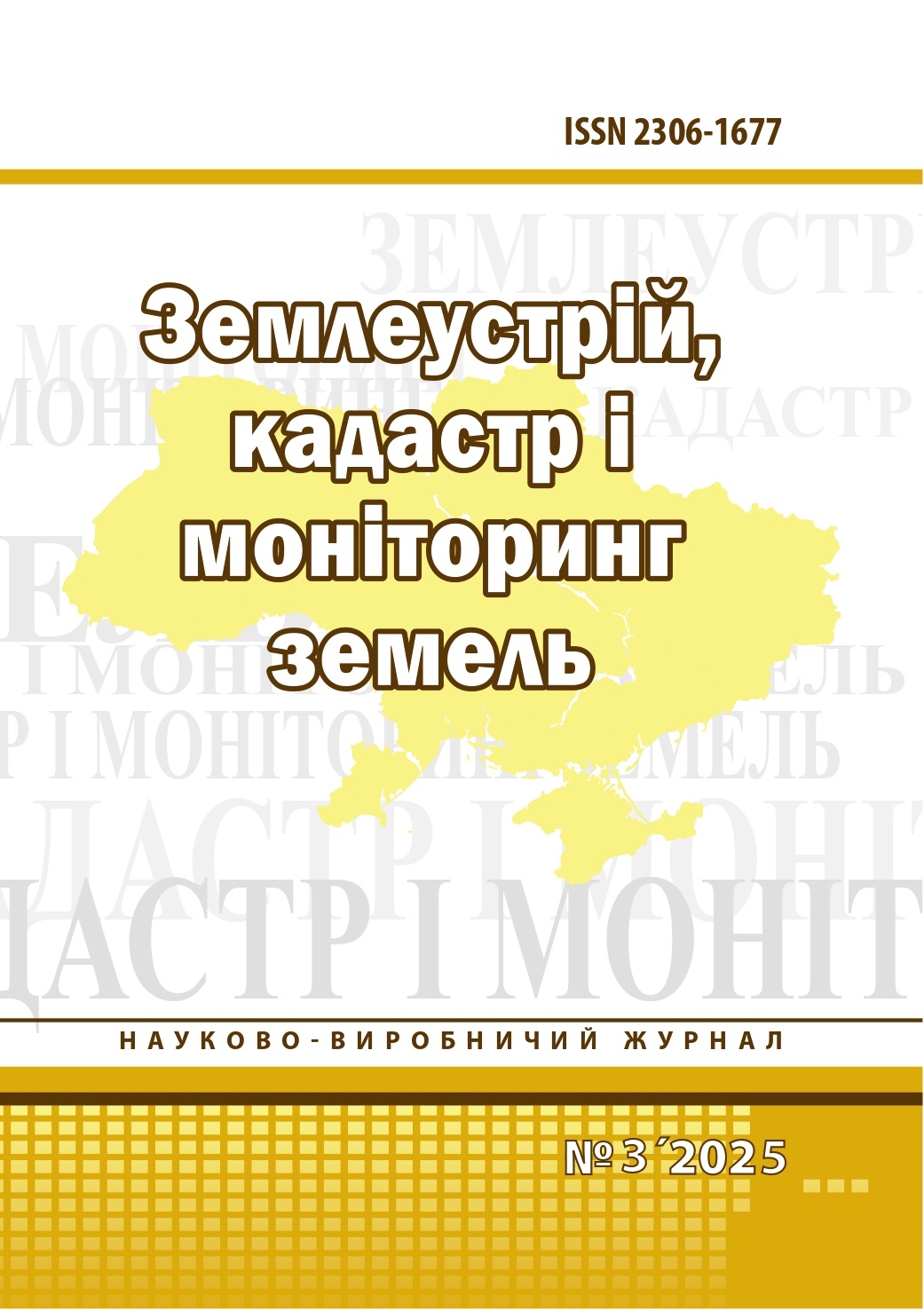Геоінформаційне забезпечення стратегічного планування та моніторингу регіонального розвитку України в умовах воєнного стану
DOI:
https://doi.org/10.31548/zemleustriy2024.03.05Ключові слова:
геоінформаційні системи, стратегічне планування, моніторинг, дистанційне зондування Землі, управління земельними ресурсами, регіональна безпекаАнотація
Стаття висвітлює використання геоінформаційних систем (ГІС) для вирішення актуальних проблем пов’язаних зі стратегічним плануванням та регіональним розвитком в кризових умовах. У контексті воєнного стану, який встановлений в Україні через війну, потреба в ефективному плануванні, управлінні та моніторингу регіональних ресурсів стала особливо гострою.
Дана наукова праця розглядає застосування сучасних ГІС як інструменту для збору, аналізу та візуалізації геопросторових даних, що дозволяє оперативно приймати рішення щодо регіонального розвитку у сфері відновлення інфраструктури, управління земельними ресурсами та оцінки екологічних наслідків військових дій.
Автори аналізують ключові аспекти впровадження ГІС-технологій у стратегії планування розвитку регіонів України, зокрема, визначають роль таких систем у забезпеченні безпеки, стабільності та економічного відновлення постраждалих регіонів.
Окремо розглянуто проблеми інтеграції ГІС з іншими системами моніторингу та управління, а також наголошено на важливості міжсекторальної співпраці на державному та місцевому рівнях для ефективної реалізації стратегічного планування. У статті також акцентується увага на використанні даних дистанційного зондування Землі для моніторингу територій, що перебувають під ризиком екологічних або інфраструктурних пошкоджень.
Проведене дослідження пропонує інноваційні підходи до використання геоінформаційних технологій у забезпеченні сталого регіонального розвитку України під час військових конфліктів та інших кризових явищ.
Ключові слова: геоінформаційні системи, стратегічне планування, моніторинг, дистанційне зондування Землі, управління земельними ресурсами, регіональна безпека.
Посилання
Kozak, M. W. (2012). Strategic planning of regional development. Evaluating the effects of regional interventions., 32.
Purkarthofer, E., Humer, A., & Mäntysalo, R. (2021). Regional planning: An arena of interests, institutions and relations. Regional Studies, 55(5), 773–777. https://doi.org/10.1080/00343404.2021.1875128
Degórski, M., & Degórska, B. (2022). Sustainable regional development: Environmental practices. In M. Mishra, R. B. Singh, A. J. d. Lucena, & S. Chatterjee (Eds.), Regional development planning and practice (pp. 3–31). Springer. https://doi.org/10.1007/978-981-16-5681-1_1
Retnandari, N. D. (2022). Implementation of strategic planning in regional/municipal governments, obstacles and challenges. Policy & Governance Review, 6(2), 155-175.
Pradhan, P. K., & Sharma, P. (2022). Regional planning strategy for sustainable development in Nepal: A critical analysis. In M. Mishra, R. B. Singh, A. J. d. Lucena, & S. Chatterjee (Eds.), Regional development planning and practice (pp. 91–120). Springer. https://doi.org/10.1007/978-981-16-5681-1_5
Завантаження
Опубліковано
Номер
Розділ
Ліцензія
Стосунки між правовласниками і користувачами регулюються на умовах ліцензії Creative Commons Із Зазначенням Авторства – Некомерційна – Поширення На Тих Самих Умовах 4.0 Міжнародна (CC BY-NC-SA 4.0):https://creativecommons.org/licenses/by-nc-sa/4.0/deed.uk
Автори, які публікуються у цьому журналі, погоджуються з наступними умовами:
- Автори залишають за собою право на авторство своєї роботи та передають журналу право першої публікації цієї роботи на умовах ліцензії Creative Commons Attribution License, котра дозволяє іншим особам вільно розповсюджувати опубліковану роботу з обов'язковим посиланням на авторів оригінальної роботи та першу публікацію роботи у цьому журналі.
- Автори мають право укладати самостійні додаткові угоди щодо неексклюзивного розповсюдження роботи у тому вигляді, в якому вона була опублікована цим журналом (наприклад, розміщувати роботу в електронному сховищі установи або публікувати у складі монографії), за умови збереження посилання на першу публікацію роботи у цьому журналі.
- Політика журналу дозволяє і заохочує розміщення авторами в мережі Інтернет (наприклад, у сховищах установ або на особистих веб-сайтах) рукопису роботи, як до подання цього рукопису до редакції, так і під час його редакційного опрацювання, оскільки це сприяє виникненню продуктивної наукової дискусії та позитивно позначається на оперативності та динаміці цитування опублікованої роботи (див.The Effect of Open Access).


